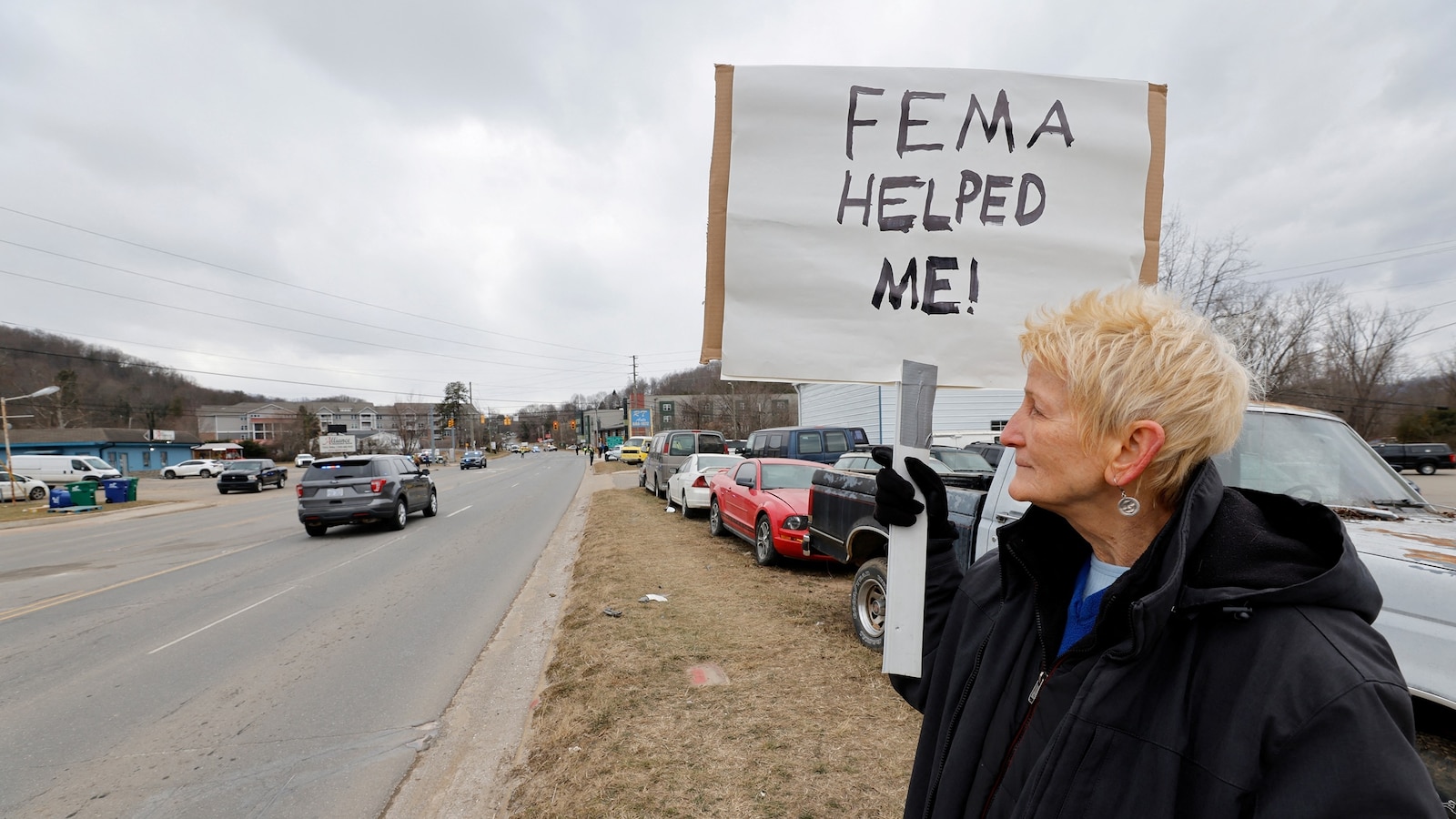President Donald Trump has never kept his contempt for the Federal Emergency Management Agency a secret, contending that the agency has been operating poorly and rarely helped disaster victims.
On Friday, while touring North Carolina neighborhoods that were ravaged by Hurricane Helene, the president said he was planning an executive order that would “begin the process of fundamentally reforming and overhauling FEMA, or maybe getting rid of them.” His order would create a task force that would look for reforms, according to sources.
However, Trump’s authority does not give him the power to terminate the agency unilaterally, according to federal laws.
Doing so would require congressional action.

President Donald Trump speaks as he meets with homeowners affected by Hurricane Helene in Swannanoa, N.C., Jan. 24, 2025.
Mark Schiefelbein/AP
FEMA is part of the Department of Homeland Security, which has an operating budget and disaster relief fund that needs to be replenished by Congress every year to help states deal with disaster recovery, preparedness, response and mitigation efforts.
The U.S. government uses the funds to reimburse local governments and states in disasters.
Congress late last year replenished the disaster relief fund by $110 billion, with $29 billion for FEMA’s response, recovery and mitigation activities related to presidentially declared major disasters, including Hurricane Helene and Milton, which President Joe Biden signed into law in December.

Fire-affected residents meet with FEMA officials, Jan. 14, 2025, in Pasadena, Calif.
Frederic J. Brown/AFP via Getty Images
When a disaster hits, state and local governments are in charge, and a lot of what FEMA currently does is support them and reimburse states for disaster aid.
Trump has claimed this process has not worked well and hurt people in disaster areas.
“You want to use your state to fix it and not waste time calling FEMA. And then FEMA gets here and they don’t know the area. They’ve never been to the area, and they want to give you rules that you’ve never heard about. They want to bring people that aren’t as good as the people you already have. And FEMA has turned out to be a disaster,” Trump told reporters Friday.
However, lawmakers from both sides of the aisle have traditionally supported FEMA, given assistance from the agency could be needed at any time. A majority of direct FEMA assistance since 2015 has gone to states such as Florida, Louisiana and Texas, which have been hit with several natural disasters, according to federal records.
Trump’s proposals have been echoed by many of his supporters, including the Heritage Foundation, which pushed forward proposals in its “Project 2025” playbook.

A couple wearing protective gear meet with a FEMA representative while searching through the remains of their home which burned in the Eaton Fire, Jan. 19, 2025, in Altadena, Calif.
Mario Tama/Getty Images
The think tank proposed moving the agency out of DHS and privatizing some of its programs, including the National Flood Insurance Program, which operates in vulnerable areas where, in some instances, private insurers won’t — and raising the damage and cost threshold that states need to meet in order to qualify for federal relief.
It also proposed changing the cost-sharing arrangement so that the federal government only covers a maximum of 75% of the costs of disasters instead of 100%.
There was little initial reaction from Capitol Hill on Trump’s call to end FEMA. However, one key Republican said she is not fully on board.

Swannanoa resident Lucy Bickers, who received assistance from FEMA after Hurricane Helene damaged her property, holds a sign in support of the government agency as she waits on the route of visiting U.S. President Donald Trump’s motorcade in Swannanoa, North Carolina, Jan. 24, 2025.
Jonathan Drake/Reuters
Maine Sen. Susan Collins told reporters Friday that she “informally” raised the idea of FEMA reform or elimination to her Senate Republican colleagues and that she expects an “oversight hearing or some reforms” regarding the agency.
“I still think you need some sort of FEMA-like agency at the federal level because states are overwhelmed at times of terrible natural disasters, but it sounds like an oversight hearing or some reforms based on the feedback I got today,” she said.
ABC News’ Isabella Murray, Rachel Scott and Ivan Pereira contributed to this report.

